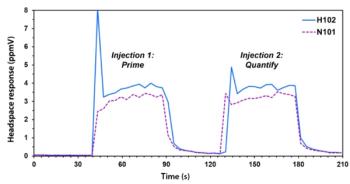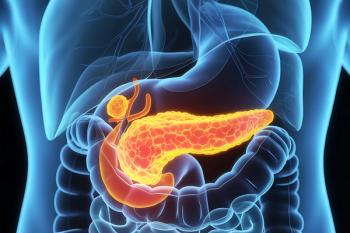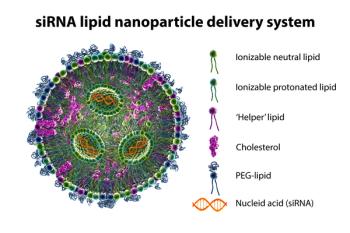Key Points
Researchers from the University of Porto studied how high glucose exposure affects energy metabolism and structural integrity in bone tissue. The model used was an ex vivo organotypic culture of embryonic chick femurs, with analysis via liquid chromatography-mass spectrometry (LC-MS).
Diabetes mellitus (DM) causes chronic hyperglycemia, leading to widespread organ damage, including in bone tissue. Diabetic bone disease can result in increased skeletal fragility, higher fracture risk, delayed healing, and impaired bone quality. Despite extensive research, the mechanisms underlying these changes are still unclear.
Chronic hyperglycemia causes severe metabolic and bioenergetic disruptions in bone tissue. A clear link to mitochondrial dysfunction was revealed, requiring targeted therapies to reduce oxidative stress and restoration of mitochondrial function; these strategies are critical to prevent diabetic bone disorders and improve bone health in diabetes patients.
Researchers at the University of Porto (Porto, Portugal) determining the effects of high glucose exposure on energy metabolism and structural integrity in bone tissue using an ex vivo organotypic culture model of embryonic chick femur. Proteomic analysis was conducted using liquid chromatography-mass spectrometry (LC-MS). A paper based on their work was published in Molecular Medicine (1).
Diabetes mellitus (DM) is a metabolic disease characterized by chronic hyperglycemia that leads to micro and macrovascular injury and results in multiple end-organ damage and disease complications. This significantly reduces the patients’ quality of life and imposes a great socio-economic burden (2,3) A heterogeneous group of diseases classified into different clinical categories with distinct etiologies that can involve a complex interplay of genetic, autoimmune, and environmental factors, DM leads to widespread metabolic dysfunction and pathological alterations in various tissues and organs, including bone tissue (2-4).
Irrespective of the type of diabetes, diabetic bone disease is associated with significant metabolic and structural changes which result in increased skeletal fragility, a higher risk of fracture, delayed healing, and impaired bone quality, collectively compromising the structural integrity and functionality of bone (5). The exact mechanistic drivers which trigger these alterations remain largely unknown, despite the extensive research conducted (3).
For this study, femora from 11-day-old red junglefowl (Gallus gallus) embryos were cultured for 11 days under physiological glucose conditions (5.5 mM, NG), chronic high glucose (HG) exposure (25 mM, HG-C), or acute HG exposure (25 mM, HG-A). To explore the proteomic changes induced by HG exposure, liquid chromatography-mass spectrometry (LC/MS) and bioinformatic analysis were conducted on bone samples, confidently identifying 5876 proteins while also revealing shifts in protein expression profiles. While the overall proteome classification between physiological glucose levels (NG) and HG-C groups was similar, there were also distinct expression patterns that emerged; the HG-C group demonstrated a noteworthy downregulation of proteins associated with cellular metabolism, while pathways pertaining to collagen synthesis and extracellular matrix organization were upregulated. These findings and the altered bioenergetic profile indicative of mitochondrial dysfunction showed the need for a detailed investigation into mitochondrial functionality (1).
The researchers believe that their results show that chronic hyperglycemia leads to significant bioenergetic and proteomic alterations in bone tissue. Bioenergetic assessment revealed increased basal respiration rates and proton leak under both acute and chronic exposure to high glucose. However, chronic exposure led to increased non-mitochondrial oxygen consumption and unchanged ATP production, in result of compromised mitochondrial efficiency and impaired glycolytic function. In contrast, acute high glucose exposure maintained higher ATP production despite increased proton leak, suggesting a compensatory mechanism to manage immediate oxidative stress.
Proteomic analysis further supported these findings, showing downregulation of key proteins involved in mitochondrial biogenesis, dynamics, and detoxification. Increased oxidative stress was indicated by higher carbonyl content and reduced expression of proteins critical for maintaining redox homeostasis. These results highlight the extensive metabolic and bioenergetic disruptions induced by chronic high glucose exposure, emphasizing a continuous across spectrum of deleterious effects on mitochondrial function, in bone tissue. This underscores the need for targeted strategies aimed at reducing oxidative stress and restoring mitochondrial function to prevent diabetic bone disorder or improve bone health in affected individuals (1).
References
1. Araújo, R.; Bernardino, R. L.; Monteiro, M. P. et al. Unveiling Metabolic Pathways in the Hyperglycemic Bone: Bioenergetic and Proteomic Analysis of the Bone Tissue Exposed to Acute and Chronic High Glucose. Mol. Med. 2025, 31 (1), 194. DOI: 10.1186/s10020-025-01251-0
2. Skyler, J. S. Diabetes Mellitus: Pathogenesis and Treatment Strategies. J. Med. Chem. 2004, 47 (17), 4113-4117. DOI: 10.1021/jm0306273
3. Schmidt, A. M. Highlighting Diabetes Mellitus: The Epidemic Continues. Arterioscler. Thromb. Vasc. Biol. 2018, 38 (1), e1-e8. DOI: 10.1161/ATVBAHA.117.310221
4. Diagnosis and Classification of Diabetes: Standards of Care in Diabetes—2024. Diabetes Care 2024, 47 (s1), S20-S42. DOI: 10.2337/dc24-S002
5. Stefano, G. B.; Challenger, S.; Kream, R. M. Hyperglycemia-Associated Alterations in Cellular Signaling and Dysregulated Mitochondrial Bioenergetics in Human Metabolic Disorders. Eur. J. Nutr. 2016, 55 (8), 2339-2345. DOI: 10.1007/s00394-016-1212-2






